
“I’m someone who tries to go to my edge, so I can understand what I’m doing,” says contemporary dancer and educator Jennifer Nugent. “I have to go to that edge before I can pare back, and I teach that in my class. That doesn’t necessarily mean that it’s high-risk movement—it’s also the edge of sensitivity, of intuitive space, of proprioception and awareness. I’m on the lookout for feedback and resonance while I’m moving.”
As a performer, Nugent has done stints with David Dorfman Dance and Bill T. Jones/Arnie Zane Company, in addition to a longtime collaboration with duet partner Paul Matteson. As an educator, she can be found at Gibney Dance, Movement Research, and Triskelion Arts in New York City; she’s also been a guest faculty member at Sarah Lawrence College. She primarily teaches contemporary technique, contemporary partnering, improvisation, and composition.
Although she’s now deeply rooted in contemporary dance, that’s not where Nugent’s journey began: She grew up in Florida, with early training was in jazz, tap, acrobatics, and lyrical. “My studio’s focus was on commercial and show dance,” she says. After graduating from high school, she performed in a jazz dance company and on cruise ships, among other gigs.

Then, in her 20s, she took some classes at Miami’s New World School of the Arts, where she was introduced to modern dance and contact improvisation. “Slowly but surely, I started shifting my gears,” she says. Among the mentors she credits with helping her make that shift are teachers Barbara Sloan, Gerri Houlihan, Dale Andree, Bambi Anderson, and Daniel Lepkoff. In 1998, at age 28, Nugent moved to NYC. She joined Dorfman’s company in 1999.
Nugent has always found teaching and performing to go hand in hand. “I share myself through movement,” she says, “and that’s the way I approach working with students.” Dancers who study with her can “expect to improvise,” she says, adding, “I ask them to follow their instincts.” She wants students to be curious, open, and receptive. Every class ends with a challenging phrase that moves through space. “It’s important to me that we get to a place where we’re all-out dancing,” Nugent says. “Even in an improvisation class, there’s a culmination of all the ideas in motion, set to music or a rhythmic expression.”
Off-centeredness is a major hallmark of Nugent’s movement. For her Dance Teacher lesson plan, she offers a “tuning” exercise that she uses to help students find support in off-balance positions. “From the get-go, my class is about leaning into the off-centered spaces, but it starts out quite subtle,” she explains. “As the movements get larger, you need to understand how to apply the weight through the feet, the pelvis, the shoulder girdle, the head, the limbs—to understand the structures of support in the body.”
Step by Step
Note: This sequence can be done in its entirety on the right side and then on the left (as demonstrated in the video), or you can swap sides between each round (i.e., steps 1–5 right and left; steps 6–10 right and left; and so forth).
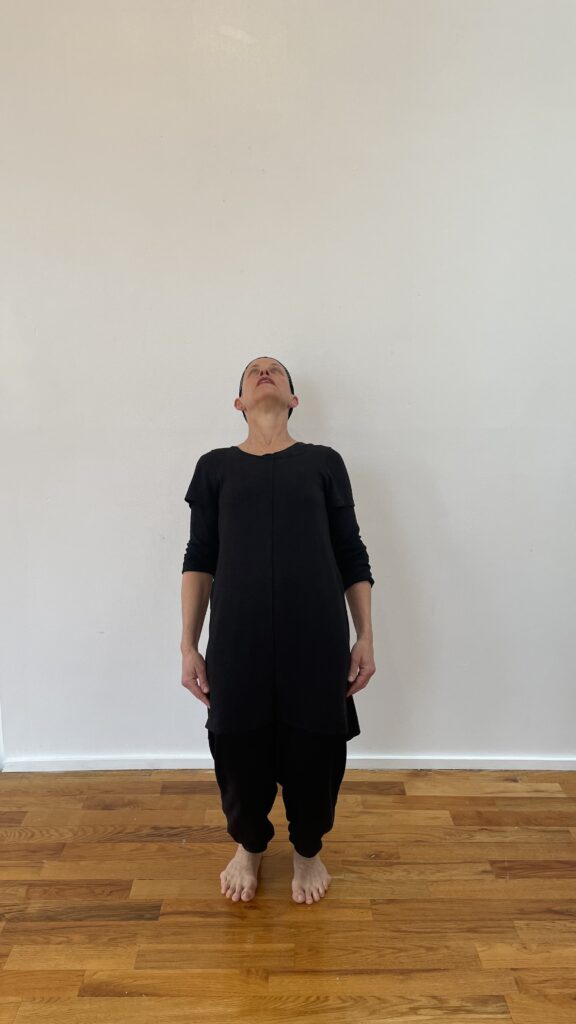
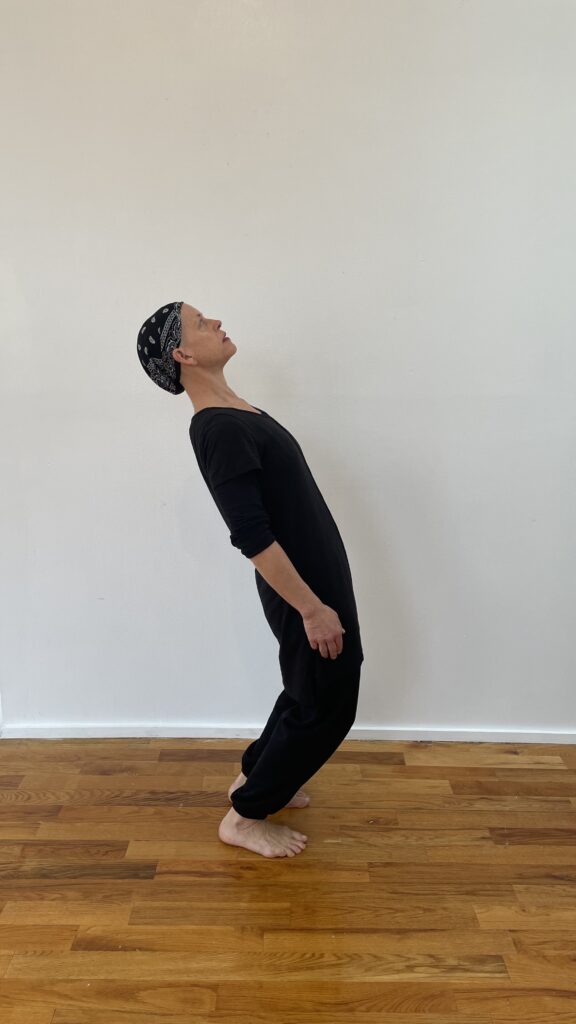
1. Stand with a long spine and parallel feet (or in a “humble”—i.e., not overly turned-out—first position). Hinge the pelvis forward, pulling up in the low belly to engage the core and inner legs. You should feel like the tail is moving forward between the heels, so you don’t have a loose lower back.
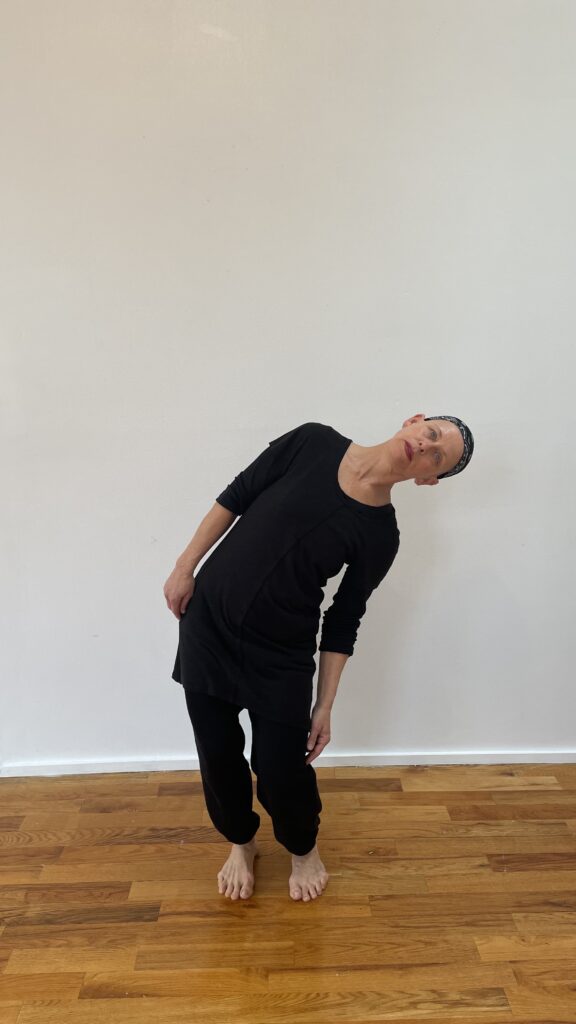
2. Initiating with the pelvis, bring the body around to the side. The torso curves away from the pelvis, so that the ribs on the top side accordion open; continue the curve all the way through the side of the neck and out the crown of the head. The weight will shift on the feet as you move, but make sure you stay grounded.
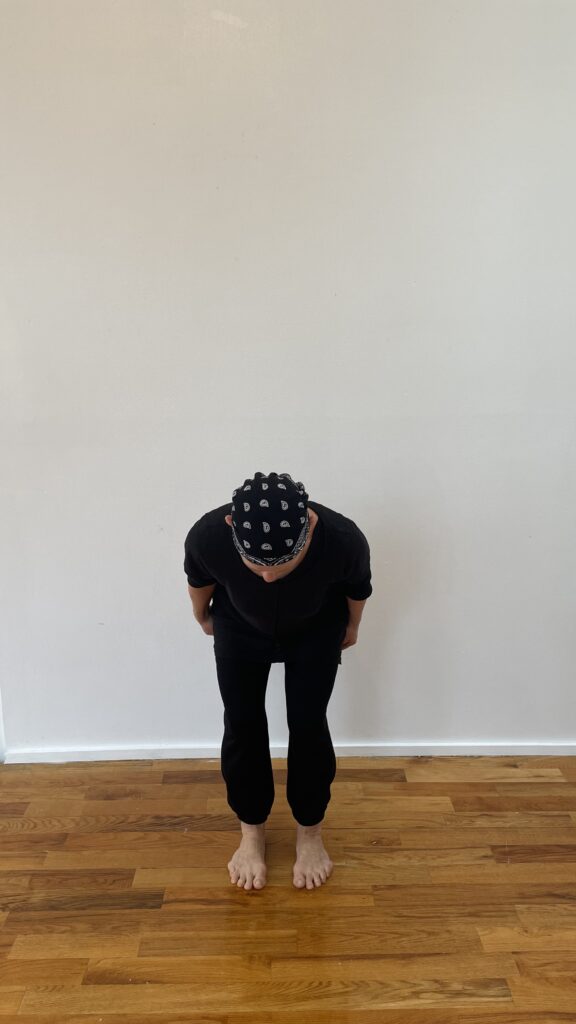
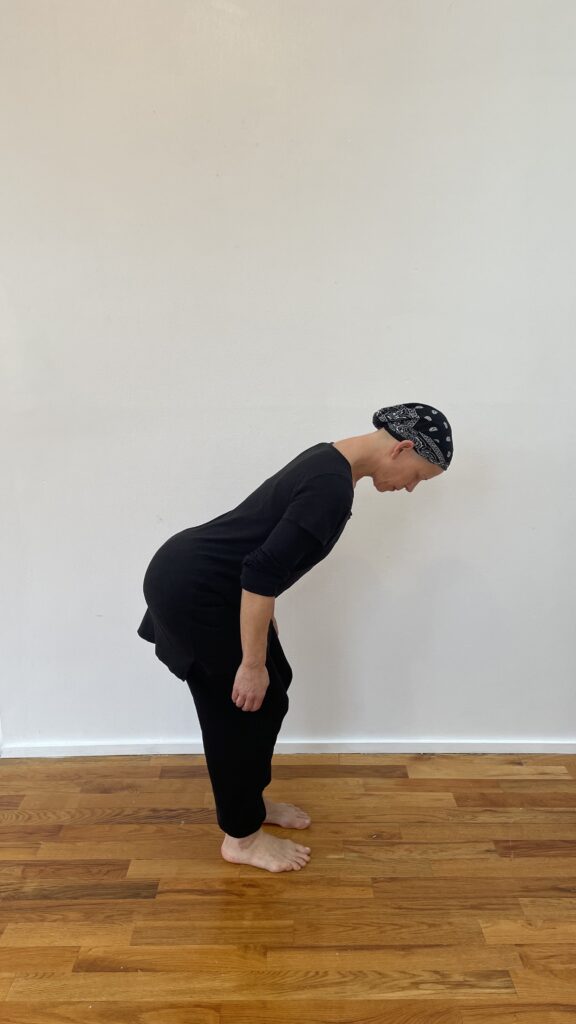
3. Initiating with the pelvis, continue the arc around to the back, ending with a lengthened spine (not quite a flat-back). As the tail moves to the back, imagine a feather coming out of the crown of the head, brushing or painting the full arc of the circle.
4. Rise to standing, swinging the floor of the pelvis back to center.
5. Reverse the sequence, beginning with the pelvis swinging back, then arcing around to the side, and finishing in the front hinge. Rise to stand with a neutral pelvis and take a moment to feel the body in this standing position.
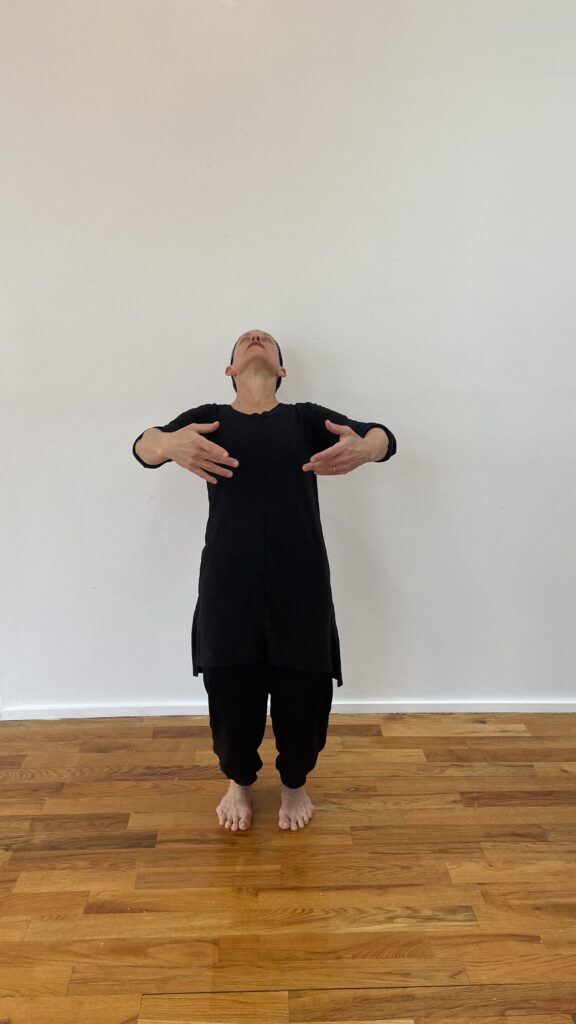
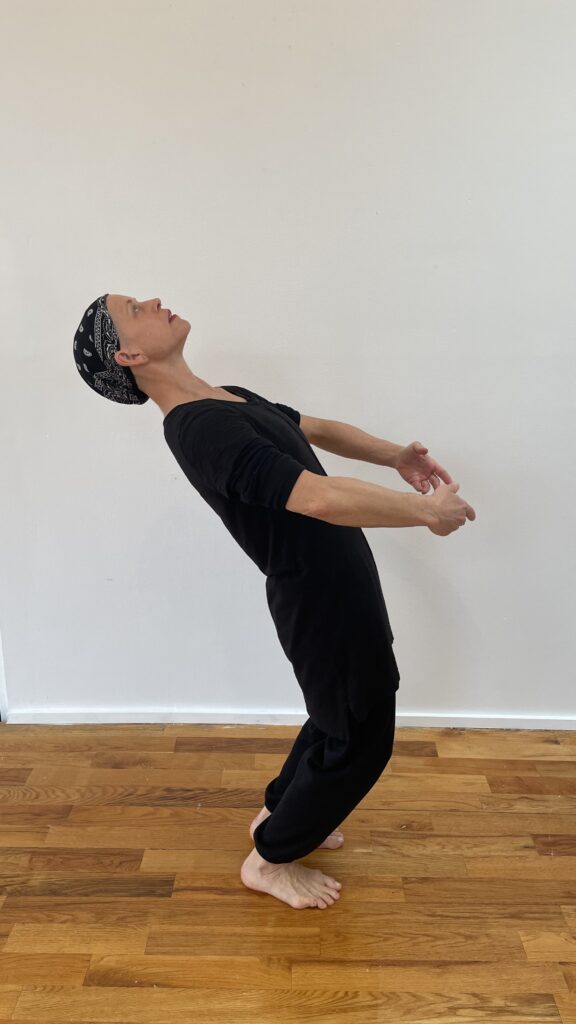
6. Add the arms. As you hinge front, the arms come from underneath, inflating into first position. Feel like you’re holding a ball or some other rounded shape.
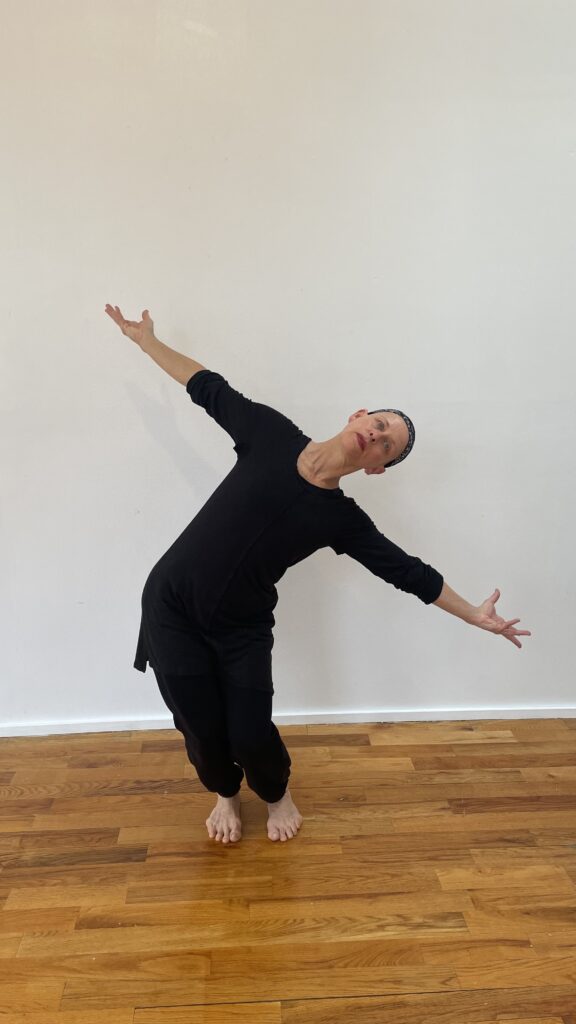
7. As you move to the side, rotate the arms open. Lead with the thumbs so the insides of the arms face the ceiling. The shoulder girdle is open and the collarbone is wide.
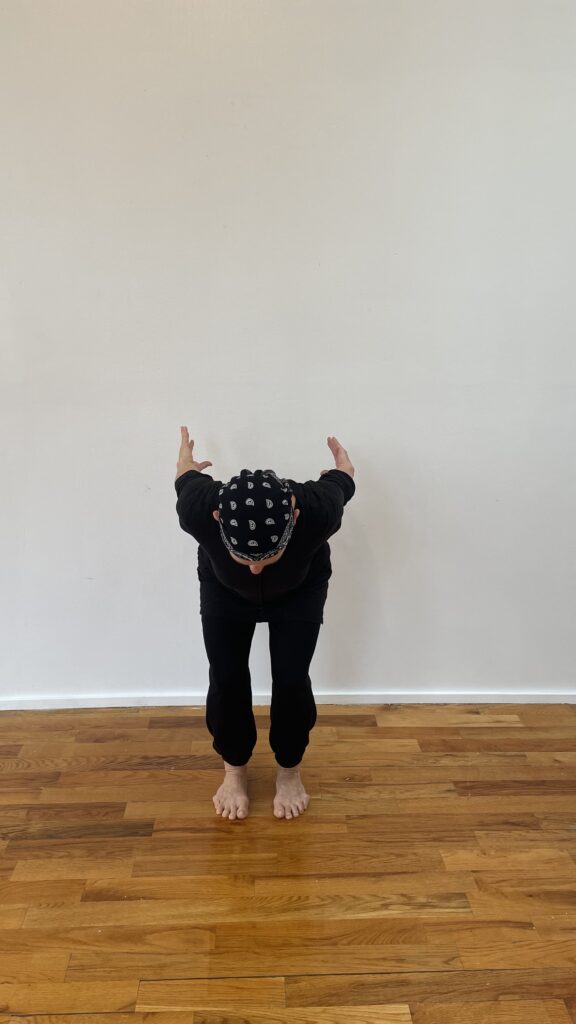

8. As you move to the back, spiral the arms inward. At the end of the arc, the arms reach back with the palms facing each other.
9. Rise to standing, swinging the arms through to the front. Feel the weight of the arms as they pass your sides.
10. Reverse the sequence, also reversing the arms. As you move from back to side, think of the tops of the arms rotating outward. Moving in this direction, you should feel the scapula and shoulder girdle coming back into their centered place as you reach the front. When you return to standing, pause for a moment to feel the resonance in your body.
Next Steps
Add a rond de jambe, first in tendu and then en l’air. In the tendu, keep the supporting knee bent. When the other leg is lifted, the supporting leg can be bent or straight, depending on your balance. Focus on fulfilling the whole semicircle of the rond de jambe.
Throughout this tuning exercise, pay attention to what Nugent calls “micro-movements”: “What transitions are going on in your weight and balance and in the dialogue between on- and off-center?” she asks. “What is the micro-dance happening within the larger movement?”





